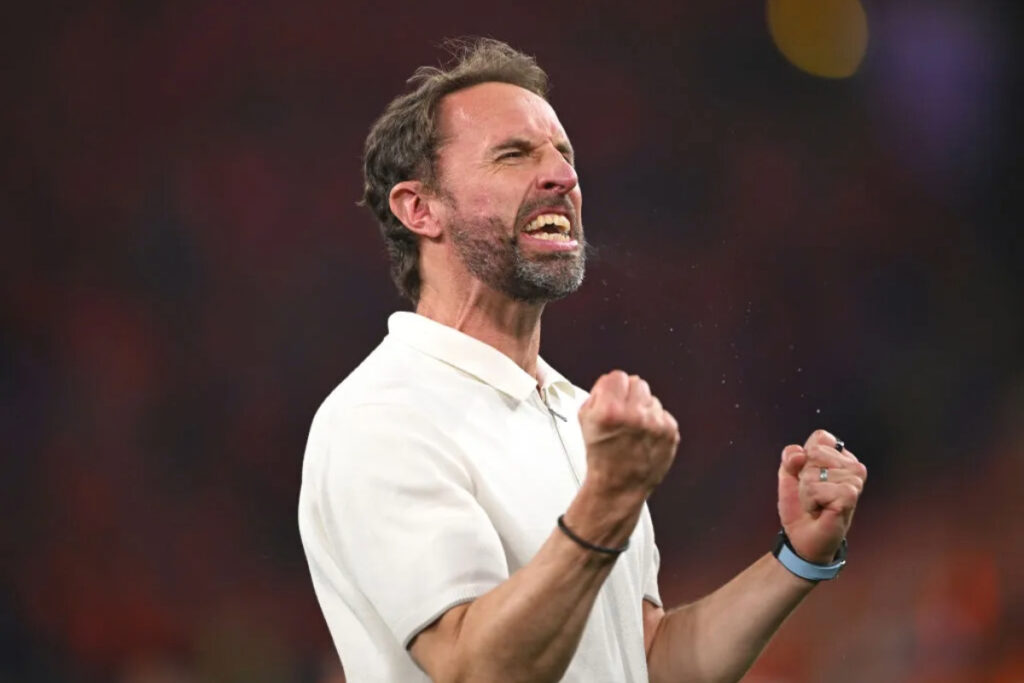
England may have fallen at the final hurdle but that doesn’t mean their run to Berlin didn’t have any winners. Ali Lyon says advertising agencies and broadcasters enjoyed a very fruitful tournament
Adidas’s flagship advert for this year’s European Championships had all the raw ingredients to pluck on the archetypal England fan’s heartstrings effectively.
In Jude Bellingham it had a protagonist who was young, charismatic and, after a spellbinding debut season at Real Madrid, is widely viewed as one of the best players in the world.
Its backing track – the Beetles’ Hey Jude – was not only immediately relatable to the spot’s magnetic star, but also has its own indelible place in the UK’s cultural fabric.
And, most importantly of all, it had a narrative arc which evolved from painful a reminder of the 30 58 years of hurt – and all the missed penalties, the refereeing injustices, the spurned opportunities they involved – to a new era. One in which hope springs eternal, chances are taken and differences are cast aside in the name of football.
As almost anyone who has tuned into one of England’s games TV – or just idly scrolled through social media – will be aware, the sportswear giant’s big budget ad has rarely been off our screens during pivotal half time intervals of big games.
And it is spots like this one, whose airwave supremacy was challenged by the likes of Paddy Power, Walkers, Gillette and the Chinese e-commerce platform Aliexpress, that have become an increasingly crucial revenue driver for struggling broadcasters, the panoply of marketing and creative agencies involved in their creation, and the advertisers themsevles.
A rare unifier in an increasingly disparate media landscape
Big games, in big international tournaments, attract big big audiences. And for this tournament, in particular, the stars aligned.
England’s semi-final against the Netherlands raked in over 20m viewers for ITV, which for recent major international tournaments has tended to share the broadcasting rights with the BBC. And over 24m people tuned in to watch Southgate’s three lions on Sunday, only to to be left devastated by Spain’s last-gasp winner.
“There are very few things in British culture that cut across the nation like live moments in sport,” Steve Martin, founding partner at MSQ Sport, tells City A.M.. “And for this tournament in particular, the time difference was perfect and England did well, both of which are big determinants for interest from brands and revenue for broadcasters.”
And while the importance of big international tournaments like Euro 2024 has always been, as Martin says, “huge” for brands and TV channels alike, their ability to buck the wider decline in viewing numbers for linear television makes them an even more appealing prospect to advertisers.
As the rise of the streaming giants and social media has led to viewing figures for marquee TV programmes – like ITV’s Britain’s Got Talent and Channel 4’s Big Brother to fall off a cliff, audiences for football tournaments like the Euros has, in actual fact, grown in recent years.
“They are becoming more important,” Martin says, “because the beauty of live sport and entertainment properties of this scale to attract huge audiences around live moments and they’re increasingly few and far between.”
‘Huge boost’ to ITV
But brands wanting to reach this increasingly rare national audience comes with a hefty price tag.
ITV was said to be charging firms £500,000 for one 30-second slot during half-time of England games, and the cost of the advertising space alone is likely to have set Adidas back more than £5m, before Jude Bellingham, the Beetles and any ad agencies the firm worked with received a single pound.
All of which, Gill Hind, director of TV at Enders Analysis, says, means a bumper payday for ITV.
“Suffice to say that ITV has had a huge Euro 2024 revenue boost, up by about 25 per cent plus year on year,” she tells City A.M. “Much of that revenue would be additional money to the market, but of course some would have been destined for the other broadcasters.
“The further England goes in any tournament the better for ITV.”
Hind’s opinion is borne out in data from marketing analytics firm Warc, whose research on four decades of major tournament football’s relationship with advertising found there to be an 8.5 per cent rise in ad spending during a summer Euros or World Cup.
And this summer is already shaping up to have beaten that average.
“Our data shows that TV spend during this tournament is tracking ahead of this level – at over £50m – due to England’s longevity extending premium spot buys into July as well as more viewing (and ad money) within BVOD services such as ITVX,” says James McDonald, Warc’s director of data. “There will be residual incremental spending for other legacy media including out of home and radio, as well as online formats such as social media and instream video.”
The Euro 2024 windfall could not have come at a better time for the channel, which in March reported a hefty fall in revenue and profit due to what it referred to as a “challenging” advertising market.
Euro 2024 opens up advertising avenues for the likes of Adidas
But the enduring importance of traditional advertising in sport has not precluded big brands from making their mark on more modern avenues.
And producing quick, reactive moves – such as the one Adidas produced (pictured) in response to Jude Bellingham’s last minute overhead kick – that elicit an emotional response to consumers are growing in importance.
“The growing impact of digital and social media means that brands can move with the tournament, and adapt to its tone, rather than just have set piece stuff that that you would buy before,” says MSQ Sport’s Martin. “That’s where the media market and advertising market has changed the most. It’s about a more dynamic approach to media, which I think is where brands have the biggest chance of success.”


